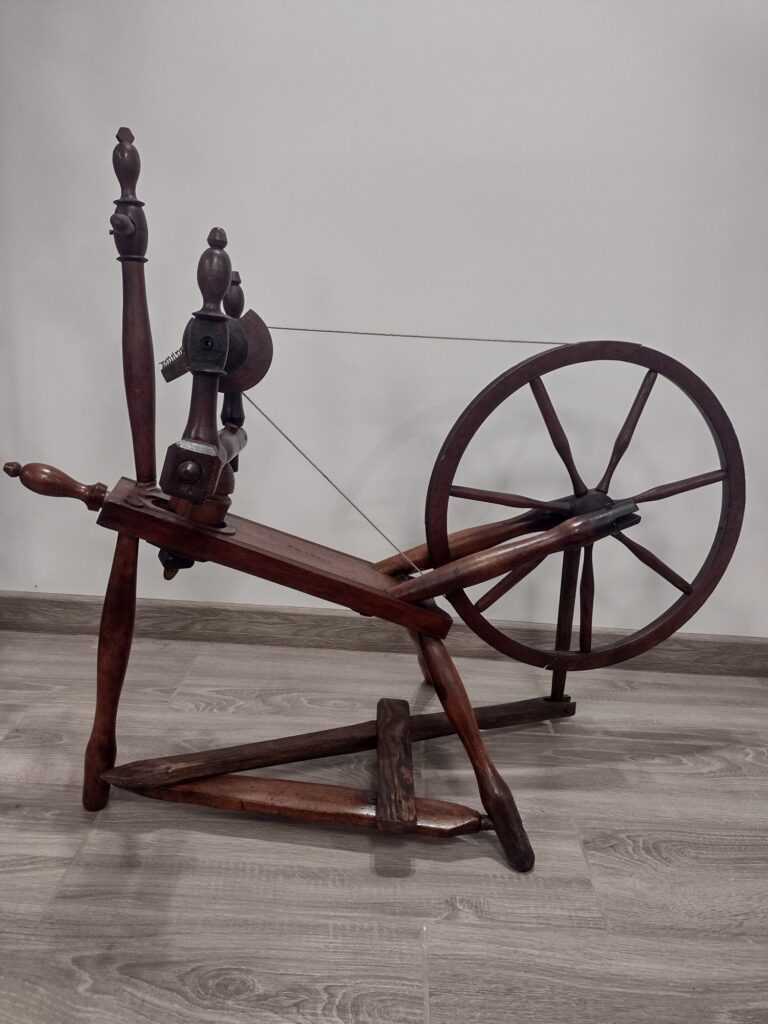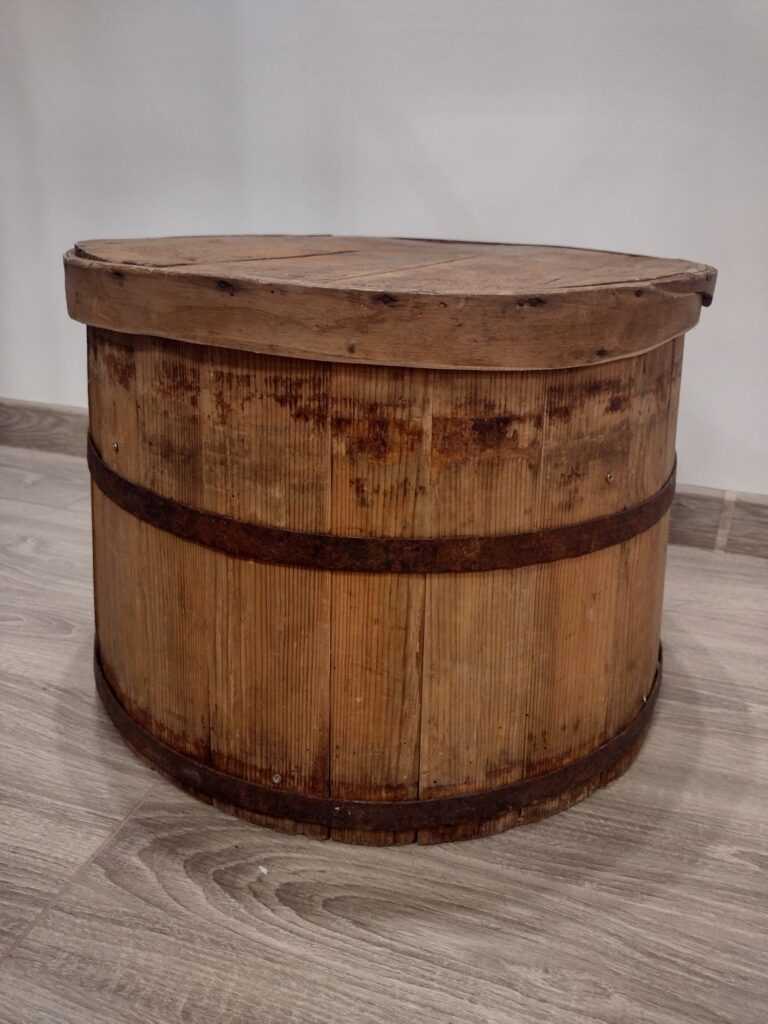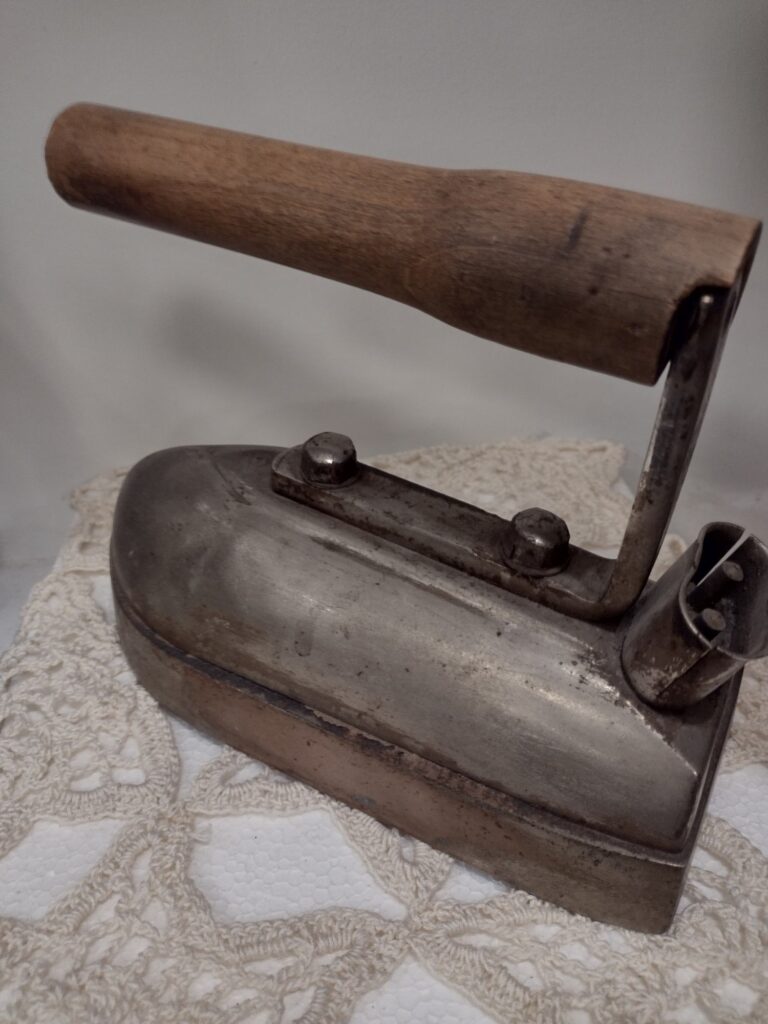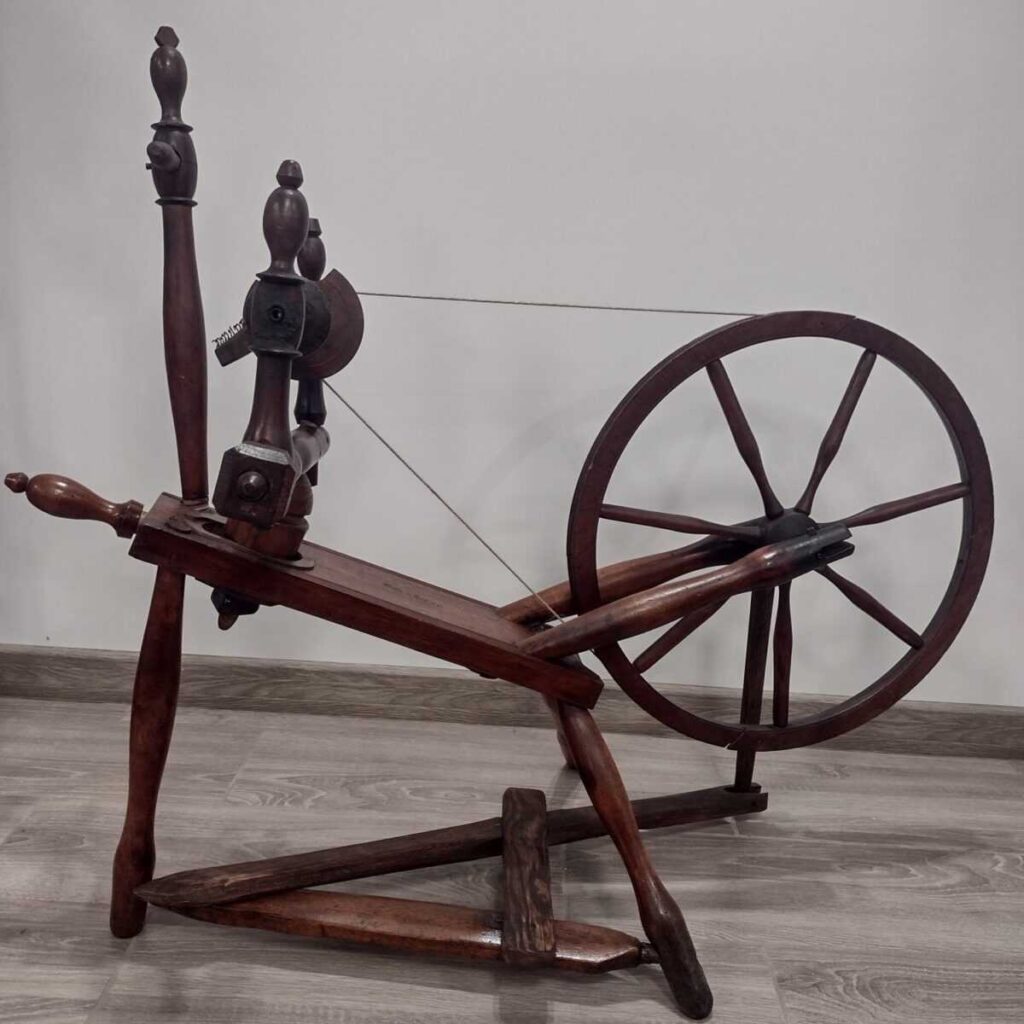Houses in our area were usually inhabited by one or two families. They were usually multi-generational. The dwelling consisted of a hallway and 2 or 3 rooms, one of which was the kitchen. The kitchen usually also contained the bed of one of the household members. An additional room was the chamber – an uninsulated part of the house, without window openings, which was used for food storage. The parts of the house that are now inside the dwelling used to be located outside the house, such as the cellar (which used to be called a pit in this area, as it was simply a cavity in the ground with an entrance door) and the ‘outhouse’, which was a toilet.
The focal point of the house, around which the family’s life revolved, was (and still is today) the kitchen. The most important piece of equipment in the kitchen, and indeed in the entire house, was the bread oven. Originally it was built of clay, later also of burnt brick1. It was used for cooking, and heating the house. It also had a low back part, the so-called “zapiecek”. It was often lined with straw and blankets, and was thus prepared as a heated bed, for the oldest person in the family. In addition to the oven, there was a table in the kitchen, where all seated chores were done and meals were eaten. Around the table were benches – wooden, wide seats on which children could sleep at night. Popular in our country were so-called sofas – benches with a backrest and a seat that slid out for the night, into which a mattress (a cloth filled with beaten straw) was placed. In every house, sacred images were placed above the table, depicting Jesus Christ and the Virgin Mary. This was the part of the “sacrum” otherwise known as the “sacred corner”.1 The space under the paintings belonged to the hosts of the house – the couple who currently did most of the housework (i.e. not necessarily the eldest of the family). The kitchen naturally contained utensils, made of clay, wood, metal and wicker or bast. The most important of these concerned the baking of bread: the kneading trough, which held the sourdough and kneaded the bread, or the kociuba, a wooden shovel, which was used to put the bread in and take it out of the oven. Since food was made from scratch at home, there were also querns, for grinding flour, and butter churns for kneading butter. Meals were eaten from a single bowl for a very long time, only the richer houses had tableware, which was usually only set on a shelf and not used.
In the kitchen and the rooms there were wooden beds, lined with mattresses, and chests in which clothes and bedding were stored. In later times, cupboards, chests of drawers and wardrobes were also set up. Additional tools used in the house were those used to look after clothes: bales, tadpoles and tare for washing clothes, a mangle and an iron, as well as looms, spindles, spinning wheels and other utensils for making clothes.
The furnishings and interior of the house were primarily functional. Due to poverty, not too many items were owned, and those that were in the house were cared for and used regularly. Most items were made of natural materials – mainly wood, clay, wicker and bast. A small percentage of the utensils were metal and glass items.



1T. Czerwiński, Ocalić o zapomnienia, Wyposażenie domu wiejskiego w Polsce, Warszawa, 2009

